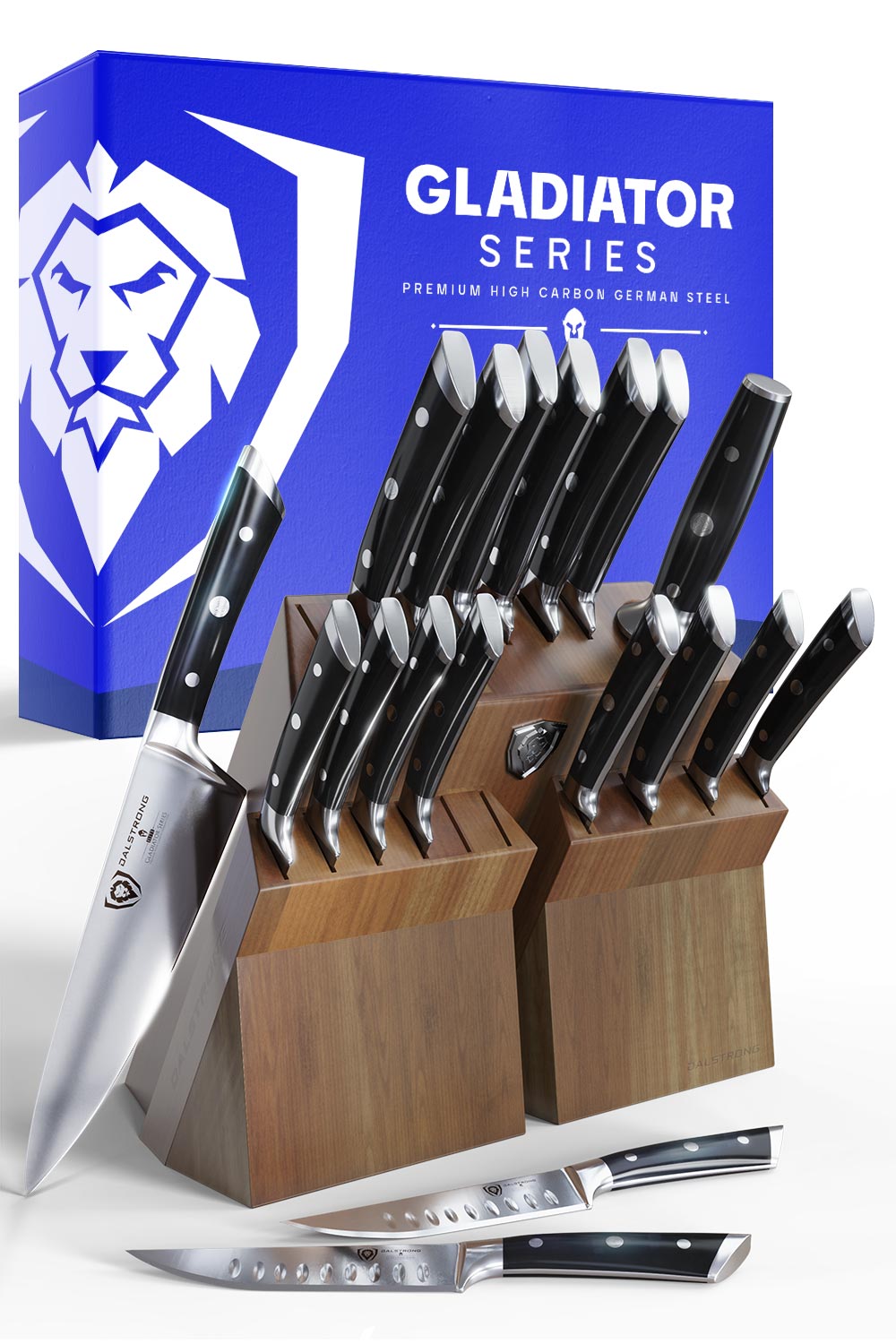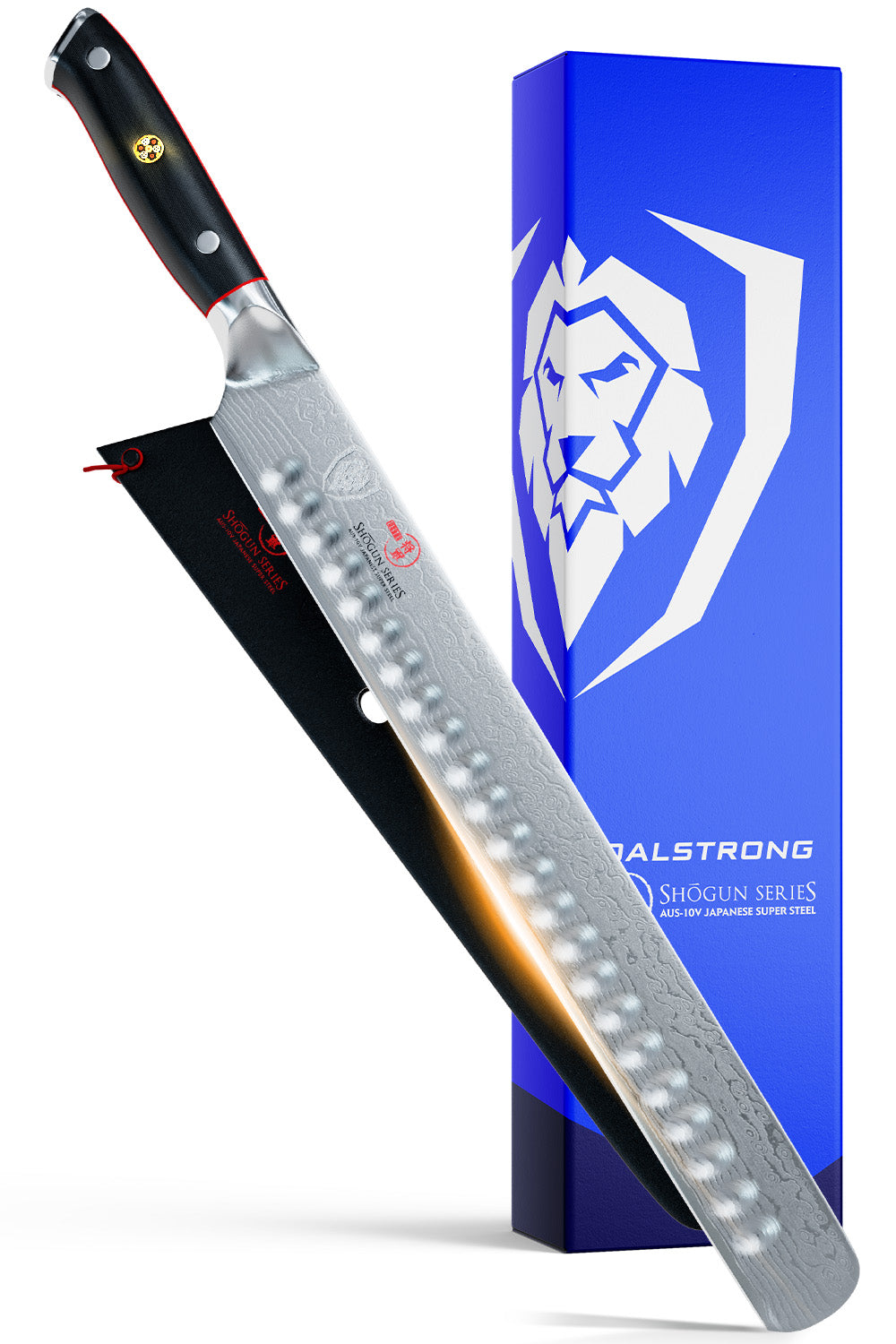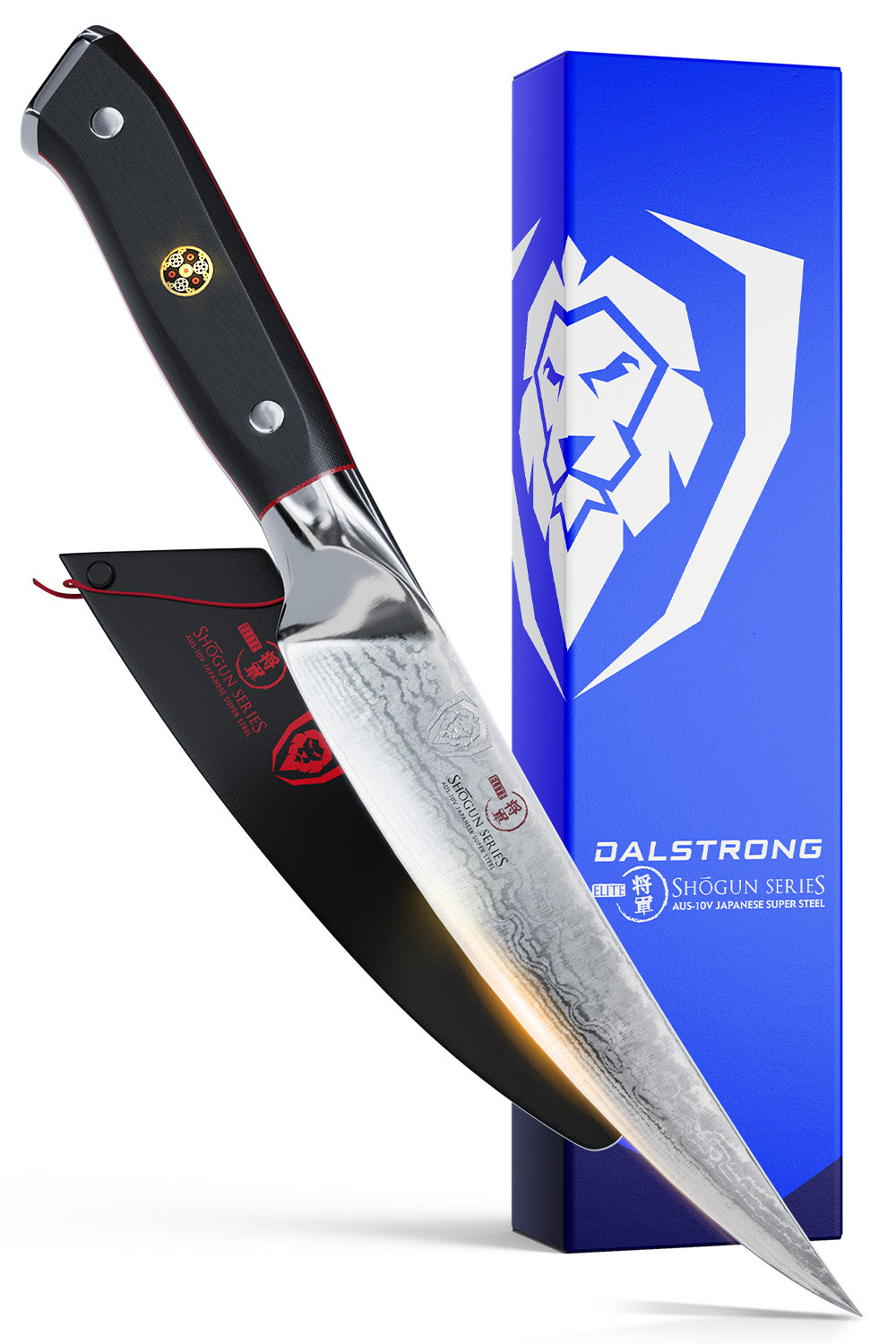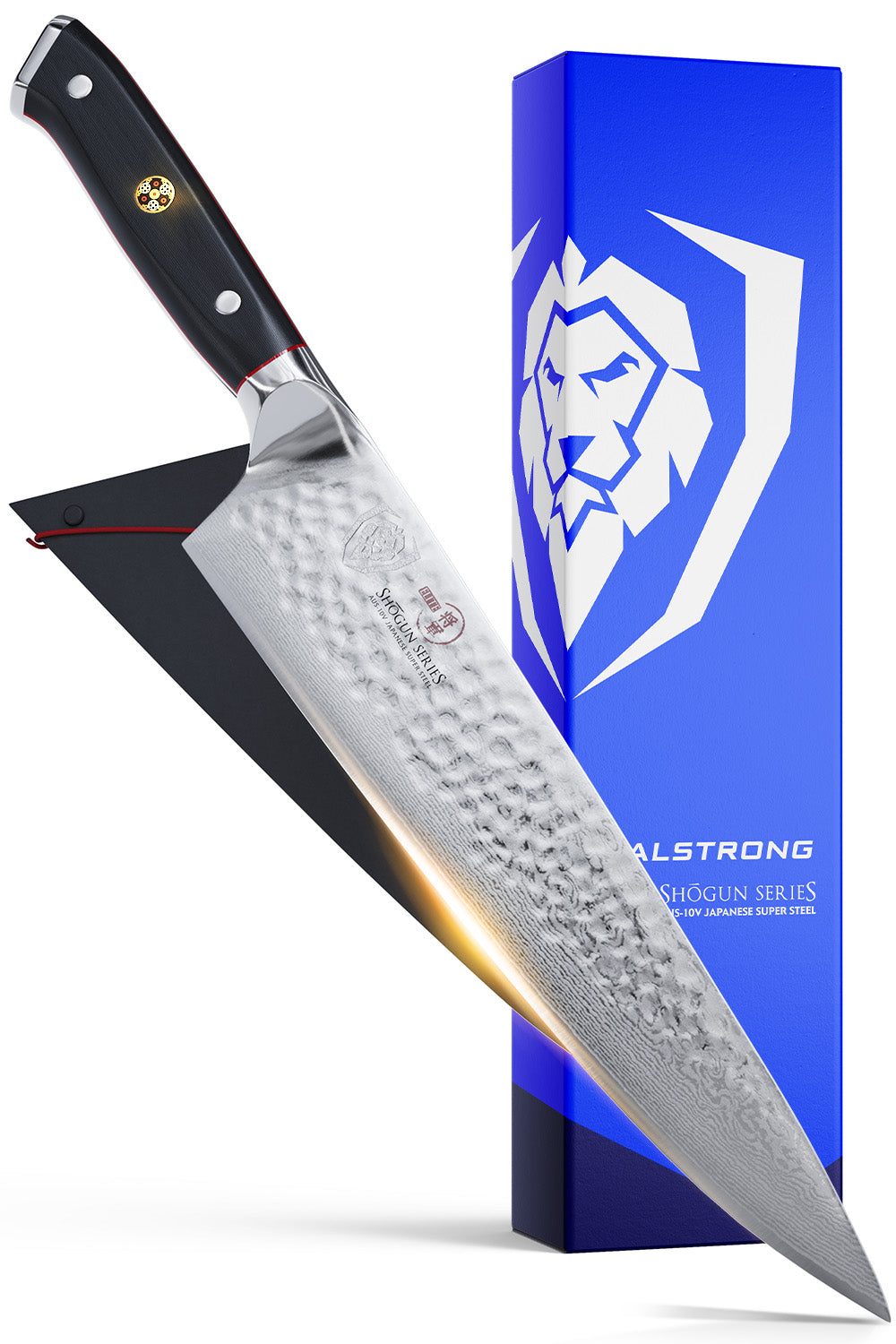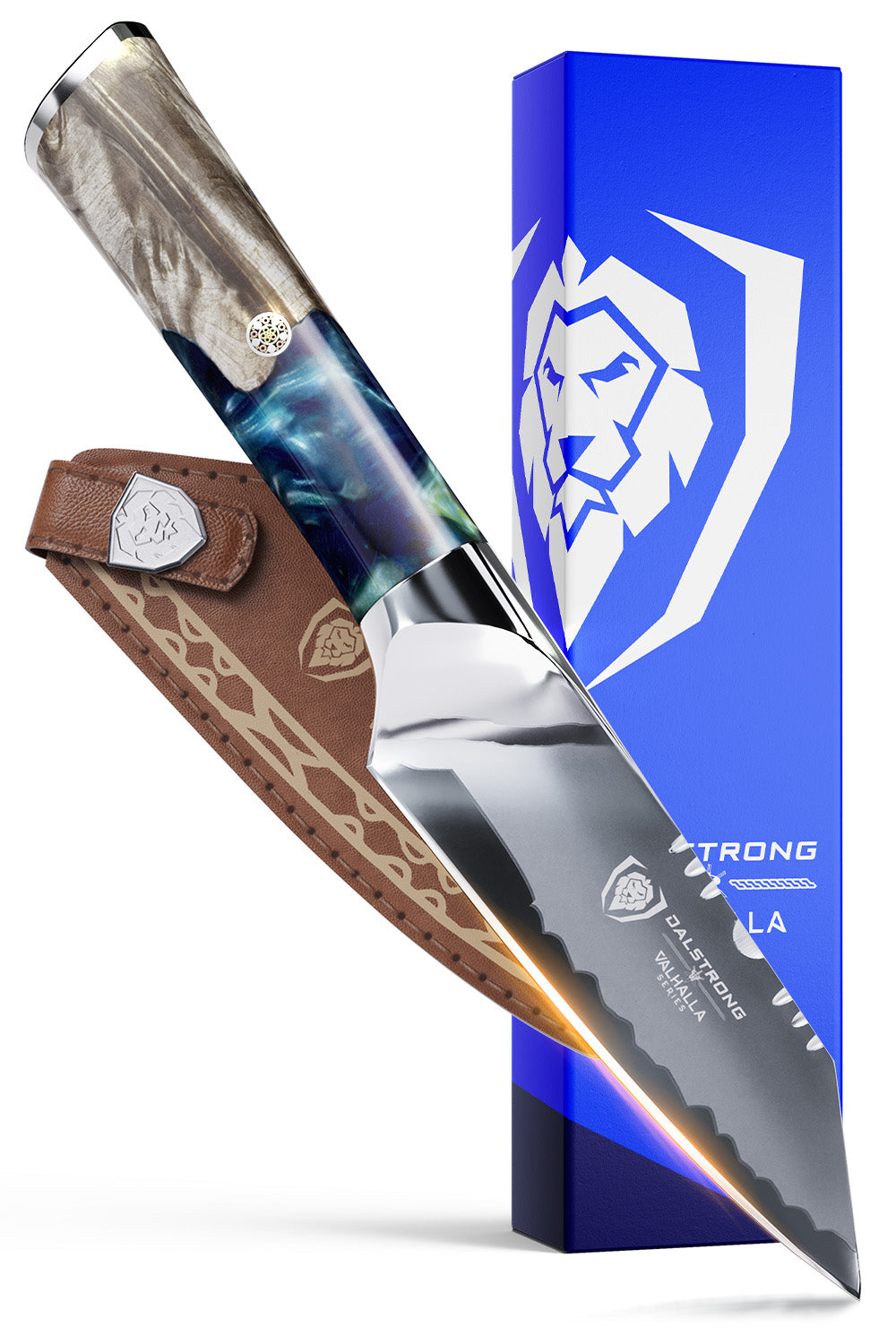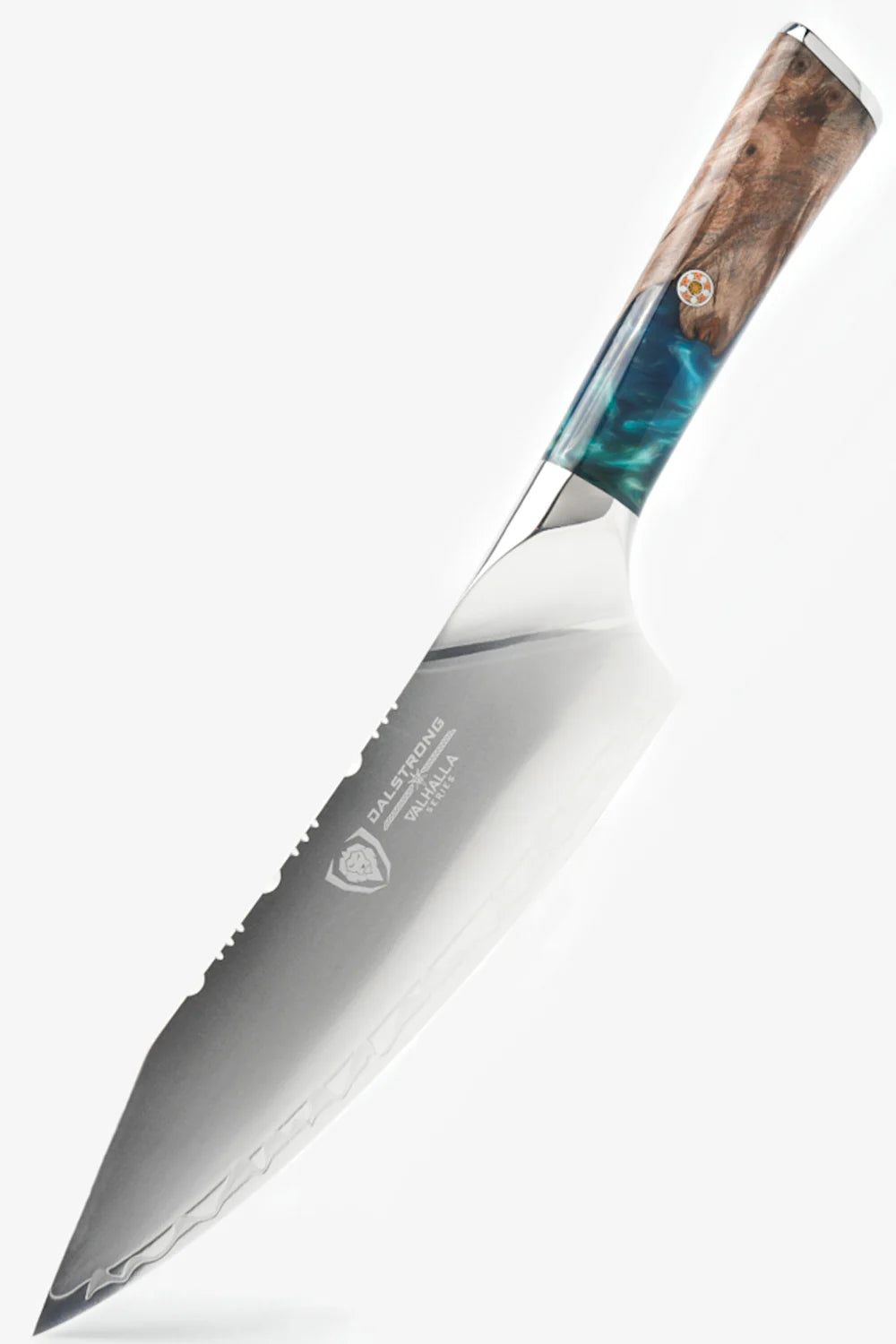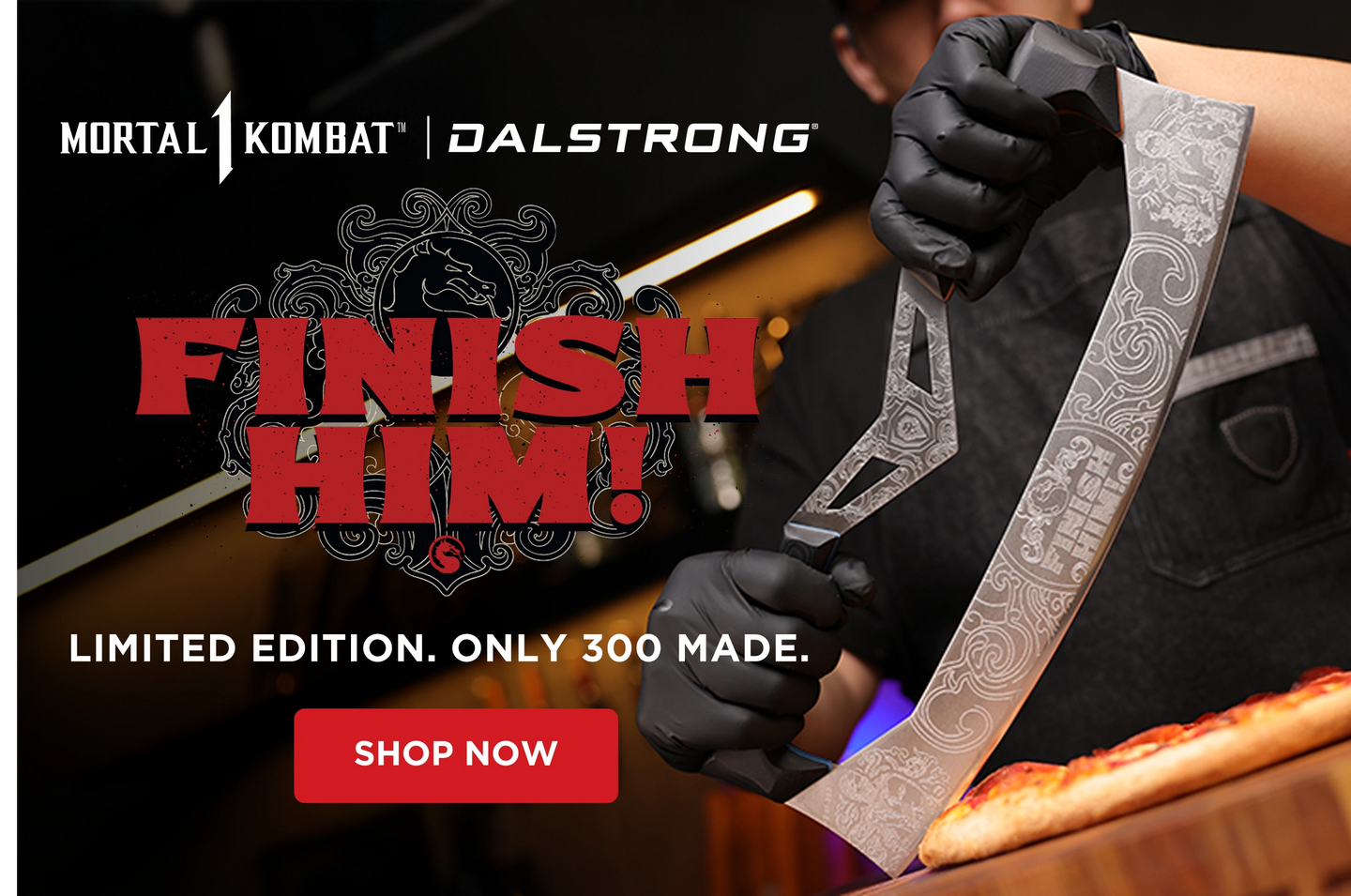 Santoku Knife 7" | Frost Fire Series | NSF Certified | Dalstrong ©
Santoku Knife 7" | Frost Fire Series | NSF Certified | Dalstrong ©
Japanese recipes are wonderful and complex. To ensure the finesse in each one of their dishes, the Japanese designed several specialty knives to fulfill each culinary task with the precision and grace required by Japanese cuisine.
So just as us Westerners have our steak knives, fillet knives, bread knives, butcher knives, paring knives and what not, Japan came up with Nakiri knives for vegetables, Kiritsuke knives for fish, and Santoku knives… for everything.
1. History Of The Santoku Knife
Of course, you won’t be surprised to read that the history of Japanese knives goes way back (waaay back) to the Nara period, when the Japanese forged their swords or Katanas. Actually, the first Japanese knives looked a lot like swords.But Japanese specialty knives, efficient as they are, were lacking something: versatility. So they had the Gyuto for meat, the Nakiri for veggies, Deba for fish. What they didn’t have is a multi-purpose blade that can perform nicely at most of those things in their everyday recipes.
That is how the Santoku is conveniently created and introduced to the Japanese market. This model is a rather young addition to the history of Japanese knives, originating around 1940, shortly after World War II.
The Santoku was named after the term Santoku bocho, or “three virtues”. These three virtues refer to the Santoku’s main applications: mincing, dicing and slicing.
2. Features Of A Santoku Knife
You can easily identify a Santoku knife by the following characteristics:- The blade is wide, with a sheepsfoot tip (the spine is curved in a downward direction until it reaches a rounded tip).
- Straight edge.
- The traditional Santoku has a single bevel, but more contemporary knife brands offer a double bevel (both sides with a cutting edge).
- The Santoku blade is thin and lightweight, especially compared to other similar knife models like the Western chef's knife.
- Blade size ranges from 5" to 8" in length.
- The high, flat profile is well suited for push-cutting techniques or downwards strokes, but not so much for rocking motions.
- Santokus often have a Granton edge or hollow edge (small indentations along the blade) which prevent food from sticking to the blade and increase cutting efficiency. A granton blade is actually quite typical of a Santoku, and only later became a popular feature in other types of kitchen knives.
- Santoku knives generally feature high carbon steel (you’ll stumble across Santokus made of blue steel, also known as Aogami super, advertised as the “greatest Japanese carbon steel” of all times).
- As with all Japanese knives, an authentic Santoku is sharp, very sharp.
- The handle can be either Western-style or a Japanese “wa handle” in a D shape.
- A good Santoku is designed for easy gripping and comfort.
- The Santoku thrives at chopping, slicing, mincing and precise cuts.
- It can be used for fish, meat and vegetables alike.
3. When Should You Use A Santoku Knife?
- The Santoku is a true multi-purpose Japanese knife. There aren’t too many of those, as Japan has a strong specialty-knife culture.
- Understanding the “three virtues” of the Santoku is a good start: chopping, slicing, dicing.
- Unlike the Chef’s knife, the Santoku makes it easier to slice using a single downward cut, as opposed to a rocking cut.
- Always use your Santoku knives on proper cutting boards (like wooden boards) to protect the edge and sharpness.
- Good examples of Santoku applications are:
- Thin, delicate slices of vegetables (perfect for recipes like stir fry).
- Precise, delicate slices of fish and seafood.
- Cutting and mincing meat and.
- Slicing or dicing fruits.
- Chopping nuts.
- Chopping and mincing herbs.
- Slicing cheese.
4. Santoku Vs. Other Japanese Knives
The Santoku is different from other Japanese knives in a few points:
- While both the Gyuto (Japanese chef knife) and the Santoku are multi-purpose knives, the Santoku has a taller and flatter profile than the Gyuto.
- The Nakiri knife, as well as the Usuba knife, have rectangular blades and are meant to cut vegetables. The Santoku’s blade shape is traditional and can cut vegetables, fish and meat.
- The Yanagiba is way longer than the Santoku and is designed to cut fish and other delicate food.
- The Deba knife may look like a chef’s knife or a multi-purpose knife, but in reality it’s meant for cutting or filleting chicken and fish. Also, the Deba is single-beveled and Santokus are double-beveled.
- A Kiritsuke is a kind of an elite knife, used by Executive chefs in Japan. It’s also the longest of Japanese knives. The Santoku is shorter, more mainstream, easier to use and a bit more versatile as well.
How about the Santoku vs. The Chef 's knife?
If you feel a bit confused about the difference between a Chef’s knife and a Santoku, please know, it’s not your fault. They both look very similar and the two of them are designed to perform almost the same list of kitchen tasks.
But when you look closely, they are not the same and shouldn’t be treated as such.
- The chef’s knife is longer and heavier than the Santoku.
- Santokus are made of high carbon steel, while chef’s knives are commonly found in stainless steel.
- Chef’s knives have a bolster, Santokus don’t.
- Chef’s knives are great for rocking cuts, while Santokus thrive at chopping.
5. Dalstrong Santoku Knives You Should Try
1. Santoku Knife 7"- Frost Fire Series
The Frost-Fire Santoku is for the modern, bold chef. Very far from the traditional knife with a dark, plain handle and a quiet design, this Dalstrong Japanese blade has also been certified by the National Sanitation Foundation.
PROS:
- The unique “frosted” finish on the blade enhances its non-stick properties.
- 7-layer high-carbon and high-chromium steel.
- Really unique white handle with a honeycomb pattern.
- The knife is ergonomic and lightweight, for more comfort and agility.
- It comes with a matching leather sheath.
CONS:
- While the Frost Fire Series offers a unique style, some cooks will prefer a less “Western” vibe for their Japanese knives.
- It may be interesting to have one knife that stands out from the rest of your kitchen, however, if you’re one of those who match their belt with their shoes, you may find it difficult to combine this knife with the other, more ordinary knife blades in your knife bag.
2. Santoku Knife 7"- Firestorm Alpha Series

The name of Dalstrong’s new series, “Firestorm Alpha”, almost says it all. Inspired by Earth’s most intense and raw forces, this Santoku model is for those professional or home cooks wanting to make a statement while also using a high-performance, premium-quality Japanese knife.
PROS:
- 7" blade forged from 67 layers of high carbon Damascus steel.
- Ultra-precise cuts thanks to the double bevel sharpened to 8-12°.
- Traditional Japanese "wa handle" in octagonal shape for easy grip.
- Unparalleled design inspired by Earth’s tones and elements.
- It comes with a sheath to protect the knife and to carry it safely.
CONS:
- A Santoku is just as versatile as a Chef’s knife, but it is a bit smaller. Consider how blade size affects the type of meal prep you usually carry out.
- The price of this knife (100% justified, by the way) is not a minor detail, especially when you have a pre-set budget for a new Santoku blade.
3. Santoku Knife 5"- Gladiator Series
A compact version of the Santoku, this Gladiator model is absolutely perfect for moderate cutting work, medium-size or smaller slices or tasks that require a bit more precision. The Gladiator series is also ideal for home cooks or entry-level cooks that are looking for easy-access quality knives.
PROS:
- More suitable for precision tasks than the 7” Santoku.
- The blade comes from a single piece of high carbon German steel.
- Hand-polished to protect the fingers and to add balance.
- The handles in the Gladiator series are ergonomic and extremely comfortable to hold.
- Low-maintenance knife.
- Excellent price-quality ratio.
CONS:
- The shorter blade of this model may make some cutting tasks more difficult. For some things, you will need a larger blade.
- The smaller handle is great for smaller hands, but not so much for bigger hands.
The hollow edges Santoku from the Phantom series is everything a Japanese Santoku is supposed to be. Classic, deadly sharp, quietly beautiful. Do you need further proof? The Japanese steel on the blade is engraved with a Japanese kanji: “ghost”.
PROS:
- The hollow edge with divots reduces friction and food-sticking by creating tiny air pockets.
- A hand-polished end cap creates counterbalance.
- Chromium has been added for stain resistance.
- The wooden handle is premium quality in a traditional Japanese D-shape.
CONS:
- Santoku knives are lightweight, compared to other kitchen knives. And this Phantom Santoku is especially light, which gives it its praised agility. If you prefer the feeling of a medium weight knife, consider a chef knife instead.
- The polished blade may not be the best bet for cutting things like bread or tomatoes, but then again, that is not the purpose of a Santoku. For those things you’ll need serrated knives.
5. Santoku Knife 7" - Shogun Series ELITE
The Japanese super steel, the Japanese honbazuke sharpening method and the quality signature of the Shogun series leave no room for doubt: This is a great Santoku blade. Also, this Dalstrong series features a breath-taking visual pattern in all its knives and knife sets: Dalstrong’s ‘Tsunami Rose’ pattern.
PROS:
- The AUS-10V super steel has been forged at 62+ Rockwell hardness and sharpened to a ruthless 8-12° degree angle.
- On top of that, 66 layers of high-carbon stainless steel cladding.
- Military grade handle, designed to endure heat, cold and moisture.
- Agile and comfortable knife.
CONS:
- If you’re looking for an NSF certified Santoku, better check the Santoku from the Frost Fire Series.
- The blade pattern is one of the best things about this model, in my opinion. But I am aware it may not be everyone’s cup of tea and some will prefer a regular, smooth blade.
6. Frequently Asked Questions About Santoku Knives
Can you use Santoku knives to slice cheese?
Yes! Santoku knives perform great at slicing cheese because of their smooth, precise blade.
Are Santokus considered paring knives?
Santoku knives are closer to chef’s knives than paring knives, actually. But there are smaller Santokus (from 3 to 5 inches) that can be used as paring knives.
Can you use Santokus with a rocking motion?
Rocking motion cuts work better with Chef’s knives. When using a Santoku, it’s best to use vertical cuts.
Can you sharpen a Santoku knife?
Yes! Santoku knives are actually easier to sharpen than other knives, because they do not have a bolster and they traditionally have a single bevel. Double bevel Santokus may require more sharpening time than a single bevel Santoku, but it’s far from complicated.
What are the best cutting boards to use with a Santoku?
End grain wood cutting boards are the safest choice to protect the edge of your premium, sharp knives, like a Santoku.































































